SN Coupler ZNDC — Technical Guide, Specifications, Applications and Maintenance
Product overview: The SN Coupler ZNDC is a unidirectional quick-connect coupler with an integrated automatic shut-off (poppet) valve. Primarily manufactured in zinc die‑cast (ZnDC) with chrome plating and offered in steel and brass alternatives, this coupling family is designed for compressed air distribution, pneumatic tool connections and factory air piping. It provides smooth, fatigue‑free plug/socket engagement, straightforward installation, and safe disconnect-under-pressure capability.
Introduction
Quick-connect couplers are fundamental components in pneumatic systems, enabling rapid, tool‑free connections and disconnections while maintaining system integrity. The SN Coupler ZNDC is optimized for one-way service with an internal automatic open/close valve that minimizes fluid loss and risk during disconnection. Its zinc die‑cast construction, with available steel and brass options, targets a broad range of industrial, workshop and plant environments where reliability, ease of use and cost-efficiency are key.
This article provides a comprehensive technical overview of the SN Coupler ZNDC, including design principles, detailed specifications, materials and build-quality analysis, typical applications, selection and installation guidance, maintenance best practices, a comparison with alternative materials, benefits and limitations, and troubleshooting tips. The content is aimed at engineers, maintenance professionals and procurement specialists who require accurate, practical information to select, install and maintain these couplers in real-world systems.
Technical Overview
Function and operating principle
The SN Coupler ZNDC is a unidirectional (one-way) quick-connect coupling incorporating an internal automatic shut-off valve—commonly implemented as a spring-loaded poppet. When the male plug is inserted into the coupler body, the poppet is mechanically depressed, creating an internal flow path that allows the fluid (compressed air, water or oil) to pass. When the plug is withdrawn, the poppet returns to its closed position under spring force, sealing the coupler and preventing fluid escape.
Key functional characteristics:
- Automatic shut-off: Enables safe disconnect under pressure by closing the coupler when the plug is removed.
- Unidirectional flow control: Designed to isolate the supply or downstream side depending on assembly orientation; typical SN variants protect supply-side lines when disconnected.
- Smooth plug/socket engagement: Low insertion force and guided alignment reduce operator fatigue and wear on seals.
- Compatibility: Rated for compressed air, water and oil in standard service conditions; materials and seal choices determine long-term compatibility with other fluids.
Design details
Although specific internal dimensions and tolerances vary by model, the common design features of the SN Coupler ZNDC family include:
- Zinc die‑cast body (ZnDC) with chrome plating for improved surface hardness and corrosion resistance; steel and brass versions are offered where higher strength or corrosion resistance is needed.
- Spring and poppet assembly—typically stainless or plated steel springs and corrosion-resistant poppet materials—configured to achieve a defined cracking pressure and positive seal when closed.
- Elastomeric seals (commonly nitrile/NBR for general service) seated in the internal bore to provide leak-tight sealing against the plug; higher-performance compounds (e.g., Viton®/FKM, EPDM) are available for elevated temperature or chemically aggressive fluids on request.
- External geometry optimized for hand grip and automated coupling applications; thread or hose-tail options for secure mounting to piping, hoses or equipment.
Performance envelope
Manufacturer-specified operating ranges for the SN Coupler ZNDC family (representative):
- Applicable fluids: Compressed air, water, oil.
- Working pressure: 0–150 PSI (manufacturer listing references 0–150 PSI (0–990 kPa); note that 150 PSI ≈ 1,034 kPa — verify the specific rated kPa value on the datasheet supplied with the part).
- Working temperature: 32–140°F (0–60°C).
- Materials: ZnDC (chrome-plated) standard; optional steel or brass constructions.
Specifications and Dimensions
The SN Coupler ZNDC family includes multiple model variants sized for common pneumatic tubing and tool fittings. The table below consolidates the typical dataset provided for the ZnDC variants. Dimensions shown for “ф” are nominal diameters (millimetres) commonly used to describe plug and socket mating diameters.
| Model | Nominal Plug × Socket Diameter (mm) | Material | Weight (g) | Weight (oz) |
|---|---|---|---|---|
| OSN8 | ф5 × ф8 (5 × 8 mm) | ZnDC (chrome-plated) | 102 | 3.60 |
| SN8 | ф5 × ф8 (5 × 8 mm) | ZnDC (chrome-plated) | 95 | 3.35 |
| OSN10 | ф6.5 × ф10 (6.5 × 10 mm) | ZnDC (chrome-plated) | 110 | 3.88 |
| SN10 | ф6.5 × ф10 (6.5 × 10 mm) | ZnDC (chrome-plated) | 103 | 3.63 |
| OSN12 | ф8 × ф12 (8 × 12 mm) | ZnDC (chrome-plated) | 115 | 4.06 |
| SN12 | ф8 × ф12 (8 × 12 mm) | ZnDC (chrome-plated) | 107 | 3.77 |
| PN8 | ф5 × ф8 (5 × 8 mm) | ZnDC (chrome-plated) | 33 | 1.16 |
| PN10 | ф6.5 × ф10 (6.5 × 10 mm) | ZnDC (chrome-plated) | 43 | 1.52 |
| PN12 | ф8 × ф12 (8 × 12 mm) | ZnDC (chrome-plated) | 52 | 1.83 |
Notes on table: Weight conversions to ounces are approximate (1 g = 0.03527396 oz). Dimensions represent nominal mating diameters and may not correspond to full external envelope or thread specifications. For installation planning, request full CAD drawings or detailed dimensional datasheets from the supplier.
Materials and Build Quality
Understanding material selection and construction practices is essential to matching a coupling to the intended operating environment and expected service life. The SN Coupler ZNDC is offered in three primary body materials: zinc die‑cast (ZnDC), steel and brass. Each option has trade-offs in strength, weight, corrosion resistance and cost.
ZnDC (Zinc die‑cast) — standard
Zinc die‑cast is widely used for couplers because it provides a good balance of cost, surface finish and machinability. Chrome plating over ZnDC improves surface hardness, wear resistance and corrosion protection compared with bare zinc. Typical advantages and technical characteristics:
- Cost-effective manufacturing for moderate production volumes.
- Good dimensional stability for complex shapes and integrated features such as knurls and retention bosses.
- Chrome plating enhances appearance and helps prevent galvanic corrosion in many service environments.
- Lower density than brass; lighter-weight coupler options (useful for hand-held tools and reduced operator fatigue).
Steel — high strength option
Steel variants provide higher tensile strength and impact resistance than ZnDC and are typically specified where mechanical robustness is critical. Steel may be supplied as stainless (for corrosion resistance) or carbon/alloy steel with surface treatments such as zinc plating or passivation. Considerations include:
- Superior mechanical toughness, better resistance to accidental impact and heavy handling.
- Potential for higher hardness and wear resistance on mating surfaces.
- Corrosion protection depends on grade and finish (stainless steels provide the best inherent corrosion resistance).
- Higher weight compared with ZnDC and brass in many cases.
Brass — corrosion-resistant and machinable
Brass bodies are common in fluid-handling and instrumentation applications due to excellent corrosion resistance in many media, good machinability, and long service life. Key properties:
- Outstanding resistance to atmospheric corrosion and water service; limited susceptibility to dezincification depends on alloy selection.
- Good compatibility with oil-based fluids and many hydraulic oils when combined with appropriate sealing compounds.
- Slightly higher density (and often cost) than ZnDC, but excellent finish and tactile feel.
Seal materials
Seal compound selection is critical to long-term performance and depends on fluid compatibility and temperature. Typical choices are:
- Nitrile (NBR): Standard for compressed air, general-purpose oils and water at temperatures up to ~80°C (176°F). Good abrasion resistance and cost-effective.
- EPDM: Better resistance to hot water and steam; not compatible with most hydrocarbon oils.
- Viton®/FKM: High-temperature and chemical resistance for fuel/oil and aggressive fluids; higher cost.
Note: The seal material used in a delivered part may affect temperature and fluid compatibility. Confirm the supplied elastomer specification when ordering for non-standard fluids or elevated temperature service.
Key Features
The SN Coupler ZNDC family incorporates a set of features engineered for safe, reliable and ergonomic operation in industrial environments. Highlighted features include:
- Integrated automatic shut-off valve (poppet) — allows safe disconnection under pressure, minimizes fluid loss and exposure.
- Unidirectional flow control — designed to isolate one side of the system when disconnected (typically the supply side), enhancing safety and preventing downstream depressurization during tool changes.
- Smooth plug/socket engagement — carefully engineered tolerances and surface finishes reduce insertion force and operator fatigue.
- Material options — ZnDC (chrome-plated) standard, with steel or brass alternatives for specialized applications.
- Multiple size variants — OSN, SN and PN variants across 5–12 mm nominal diameters to match common pneumatic tube sizes and fitting standards.
- Compact, lightweight options — PN series provides a lighter-weight alternative where bulk and mass are constrained.
- Corrosion protection — chrome plating on ZnDC reduces corrosion risk in many environments; brass and stainless options available for harsher conditions.
- Ease of installation — standard thread/hose-tail mounts and clear geometry simplify retrofits and new installations.
Use Cases and Applications
The SN Coupler ZNDC is designed for a broad spectrum of pneumatic and fluid-handling applications. Representative use cases include:
Industrial compressed air distribution
Plant air networks supplying tools, clamping systems, air guns and automated equipment frequently use quick-connect couplers to enable rapid reconfiguration and maintenance. The automatic shut-off poppet reduces air loss when tools are changed out and protects downstream systems.
Workshop tools and portable equipment
Handheld air tools—impact wrenches, grinders, sanders—benefit from lightweight couplers with smooth engagement. The PN variants (lighter weights) are attractive for portable tool connections where reducing weight on tool-hose assemblies decreases operator fatigue.
Paint booths, finish lines and washdown systems
When used for water or oil (within material compatibility limits), SN Coupler ZNDC couplers provide quick-change functionality for spray guns, washdown hoses and spray manifolds. Selection of brass or stainless options and appropriate seals is advised for persistent wet environments.
Automotive service and assembly
High-frequency tool changes in assembly lines and service bays demand robust, low-failure-rate couplers. The SN family provides rapid tool exchange while maintaining system pressure and cleanliness.
Test benches and instrumentation
Because of the built-in valve and good sealing performance, these couplers are suitable for temporary connections on pneumatic test rigs and process instrumentation where containment during disconnects is required.
Comparison: ZnDC vs Steel vs Brass SN Couplers
Choosing the correct body material is a common trade-off between cost, weight, mechanical strength and corrosion resistance. The table below summarizes the typical differences among the three material options available for the SN coupler family.
| Attribute | ZnDC (chrome-plated) | Steel (carbon/stainless) | Brass |
|---|---|---|---|
| Typical strength | Moderate — suitable for standard pneumatic service | High — best for heavy handling and impact-prone environments | Moderate — good mechanical properties for typical fluid fittings |
| Corrosion resistance | Improved by chrome plating; moderate in aggressive environments | Excellent for stainless grades; carbon steel requires plating/coating | Very good in water and atmospheric environments; select alloy to avoid dezincification |
| Weight | Light — lower operator fatigue for handheld tools | Heavier — increased mass may be acceptable for stationary systems | Moderate — heavier than ZnDC, lighter than many steels |
| Cost | Lowest cost option for most applications | Higher cost (especially stainless) | Higher cost than ZnDC, justified by corrosion resistance |
| Typical seal compatibility | NBR common; FKM/EPDM optional | NBR common; FKM/EPDM optional | NBR common; FKM/EPDM optional |
Selection guidance: Choose ZnDC for economy and light-duty hand tools; select steel (stainless) for high-impact, corrosive or heavy-duty industrial use; choose brass where long-term corrosion resistance in wet environments is required.
Benefits and Limitations
Benefits
- Safety on disconnect: The internal automatic shut-off poppet allows safer disconnection under pressure, minimizing the risk of spray, sudden decompression or loss of fluid.
- Operational efficiency: Quick coupling and uncoupling speeds changeovers and reduces downtime on lines and tools.
- Ergonomics: Smooth engagement and lightweight variants reduce operator fatigue in repetitive tool-change environments.
- Versatility: Compatible with compressed air, water and many oils when correct seal materials are specified.
- Material options: ZnDC, steel and brass bodies enable selection based on cost, strength and corrosion resistance requirements.
Limitations
- Temperature range: Standard elastomers (e.g., NBR) limit continuous operation to approximately 0–60°C (32–140°F). For elevated temperatures, specify FKM or EPDM seals as appropriate.
- Pressure rating: Manufacturer-specified maximum working pressure (up to 150 PSI) is adequate for pneumatic applications but may be insufficient for higher-pressure hydraulic systems.
- Material-specific vulnerabilities: ZnDC may not be suitable for prolonged exposure to highly corrosive environments unless the component is plated and maintained; brass alloys may suffer dezincification in certain aggressive media.
- Flow restrictions: Quick couplers inherently introduce flow constrictions compared with smooth-bore piping; selection of larger diameter models (e.g., SN12) mitigates pressure drop in high-flow applications.
Installation and Integration Guidance
Proper installation is essential for leak-free, durable performance. Follow these professional steps and checks when integrating SN Coupler ZNDC into your system:
- Confirm component selection: Verify model, diameters, material and seal compound suitability for the working fluid, temperature and pressure.
- Inspect parts prior to installation: Check for damage, foreign material, correct plating or finish, and correct thread/hose-tail type.
- Prepare mating surfaces: Clean mating threads and hose barb surfaces. Remove swarf or packaging residues.
- Seal threads properly: Use thread sealant or PTFE tape where required on male threads. Avoid excess tape that can shear and contaminate downstream equipment.
- Torque to specification: Tighten threaded mounts to the torque recommended by the supplier or by standard practice for the mounting thread size. Avoid over-torquing ZnDC bodies which can crack under excessive stress.
- Mount orientation: Install couplers such that they are accessible for manual operation and oriented to reduce sag or mechanical loading on the connection point.
- Verify system pressure and test for leaks: After installation, pressurize the system incrementally and use a leak-detection solution or electronic leak detector across joints and the coupler body.
Commissioning checks
During initial commissioning, perform the following tests:
- Operate a series of coupling and uncoupling cycles to confirm smooth engagement and positive shut-off action.
- Measure pressure drop across the coupler at expected flow rates to confirm acceptable flow performance.
- Inspect for external leaks around the seal area and body interfaces under nominal operating pressure.
Maintenance and Care Guide
Regular maintenance will extend service life and ensure consistent performance. Below is a professional maintenance program tailored to the SN Coupler ZNDC series for plant maintenance teams and technicians.
Routine visual inspection (daily/weekly)
- Check for visible external damage, corrosion, or packaging residue.
- Verify secure mounting and that couplers are not bearing lateral load from hoses or tooling.
- Confirm the chrome finish (on ZnDC variants) has not flaked or degraded significantly.
Functional check (monthly)
- Perform multiple coupling/uncoupling cycles to confirm smooth operation and absence of binding.
- Listen for unusual air/water discharge sounds; inspect for leakage at the poppet/seal area under pressure.
- Check that the automatic shut-off closes reliably when the plug is withdrawn.
Preventive maintenance (quarterly/biannual)
- Disassemble couplers per manufacturer instructions (if serviceable) and visually inspect internal springs, poppets and seals.
- Replace seals at first sign of hardening, cracking, flattening or significant wear. Replace springs showing corrosion or loss of elasticity.
- Clean internal passages with a lint-free cloth and a compatible solvent; avoid aggressive solvents that attack elastomers.
- Lubricate sliding components with a manufacturer-approved lubricant (commonly a light synthetic grease compatible with the elastomer selected) to reduce wear and ease operation.
End-of-life criteria and replacement
- Replace the coupler if the poppet fails to seal (persistent leak under pressure after seal replacement) or if the body is cracked, severely corroded or deformed.
- For components in critical service, establish a scheduled replacement interval based on measured cycles and service conditions rather than purely calendar time.
Troubleshooting
Below are common issues encountered in the field with SN quick couplers and recommended corrective actions.
Issue — External leak at coupler body
Cause: Damaged body finish, cracked body, improper thread sealing, or loose mounting.
Action: Depressurize system, inspect threads and re-torque or re-seal as required. Replace body if hairline cracks or plating flake expose base material.
Issue — Internal leak (poppet fails to seal)
Cause: Worn/damaged seal, debris lodged in poppet seat, or weakened spring.
Action: Disassemble, clean the seat and poppet, inspect and replace seals and spring if necessary. Reassemble and test at system pressure.
Issue — High insertion force or difficult coupling
Cause: Burrs on plug/sleeve, contamination, or hardened/incorrect seal.
Action: Inspect mating plug for burrs, clean both elements, and replace seals if hardened. Confirm correct plug variant is used for the coupler model.
Issue — Rapid wear in aggressive environment
Cause: Inadequate material selection (ZnDC in corrosive environment) or incompatible seal compound.
Action: Transition to brass or stainless steel variants and specify chemical-resistant elastomers such as FKM, where applicable.
Procurement and Specification Checklist
When specifying SN Coupler ZNDC for purchase or integrating into project BOMs, use the following checklist to ensure correct selection and minimize rework:
- Confirm the model number (OSN/SN/PN variant) and nominal diameter that matches tube/hose dimensions.
- Verify body material: ZnDC (chrome-plated) vs steel vs brass.
- Select seal material based on fluid chemistry and temperature (recommend NBR for standard air, FKM for high-temperature oils, EPDM for hot water/steam).
- Confirm working pressure and temperature ratings with the vendor’s certified datasheet (note the kPa equivalency).
- Request dimensional drawings or 3D models for space and interference checks.
- Confirm surface finish and plating specifications if the environment is mildly corrosive.
- Order spare seals and springs as part of first-run spares for preventive maintenance.
Regulatory and Safety Considerations
Although quick-connects are simple mechanical components, their role in systems that operate under pressure requires attention to safety standards and good engineering practice:
- Installers should follow applicable local codes for pneumatic and fluid systems, including pressure vessel and piping directives where relevant.
- Ensure that pressure relief and locking-out procedures are in place before maintenance and replacement operations.
- For couplers used with hazardous fluids or in safety-critical applications, use fail-safe assemblies, secondary capture devices and consider directional valve logic to prevent accidental ejection or pressurized disconnects.
- Confirm chemical compatibility via supplier data sheets for elastomeric components to prevent seal failure and leaks with aggressive fluids.
Conclusion
The SN Coupler ZNDC family is a practical, economical and safe solution for one-way quick‑connect requirements in compressed air systems and compatible water/oil applications. By combining an integrated automatic shut-off valve with a selection of body materials (ZnDC, steel, brass) and multiple size variants, these couplers provide flexibility to match a wide range of industrial needs.
Key reasons to consider the SN Coupler ZNDC:
- Automatic shut-off for safe disconnect under pressure and reduced fluid loss.
- Multiple size and material options to align with performance, weight and corrosion-resistance requirements.
- Good ergonomics and smooth engagement for frequent-use environments.
- Simple installation and maintenance with accessible spare parts (seals and springs).
Successful deployment requires selection of the appropriate material and seal compound, correct installation torque and orientation, and a preventive maintenance program that includes routine inspection, cleaning and scheduled seal replacement. When these practices are applied, SN Coupler ZNDC units deliver reliable operation and long service life in workshops, production lines and utility networks.
If you require detailed CAD drawings, certified pressure test data, or advice on seal selection for a specific fluid or temperature beyond the standard 0–60°C range, consult the product datasheet provided with the part or contact the manufacturer’s technical support team for application-specific guidance.

 Tiếng Việt
Tiếng Việt
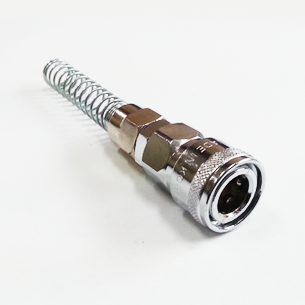
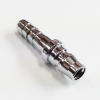
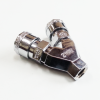
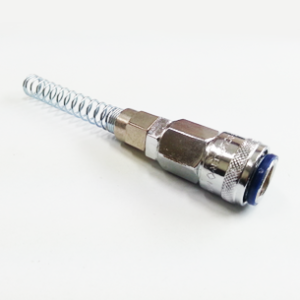
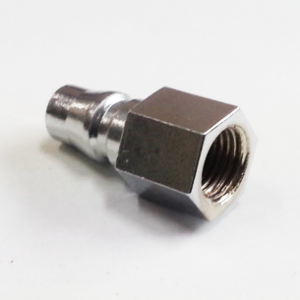
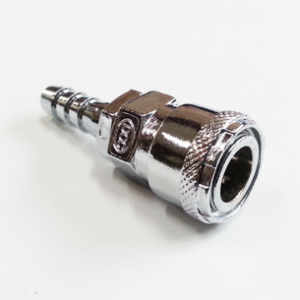
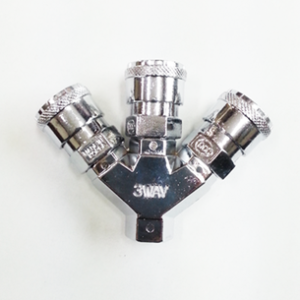
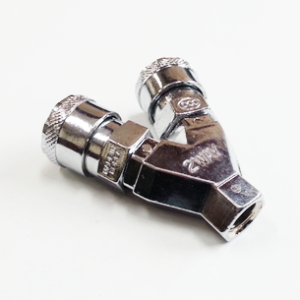
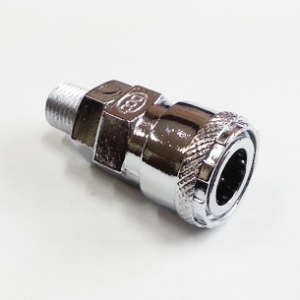
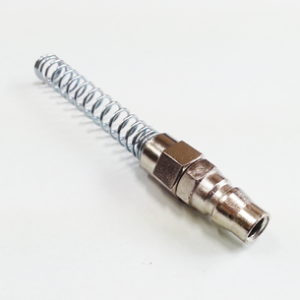
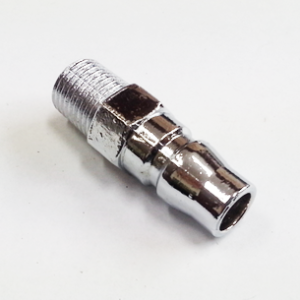
Reviews
There are no reviews yet.